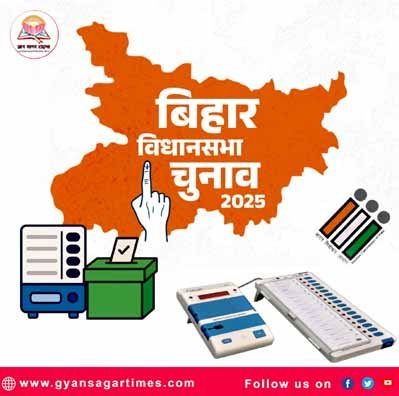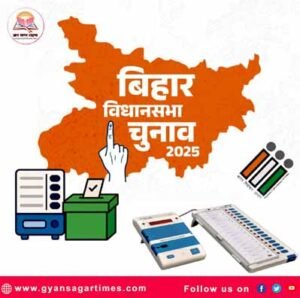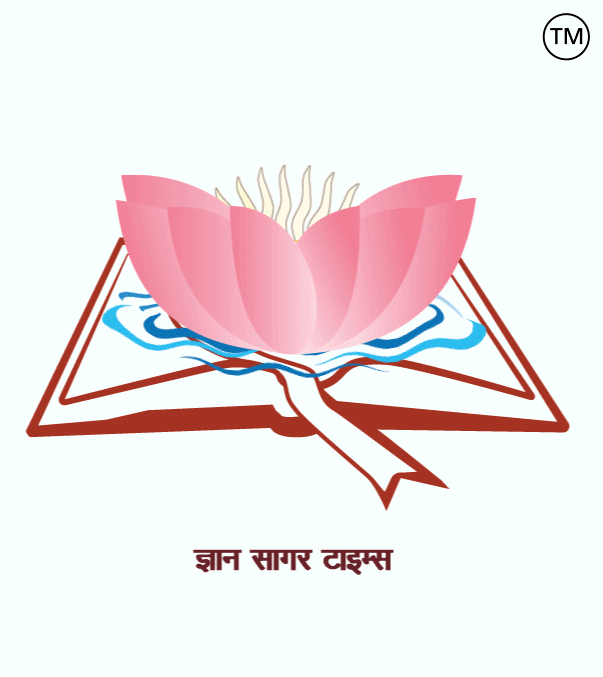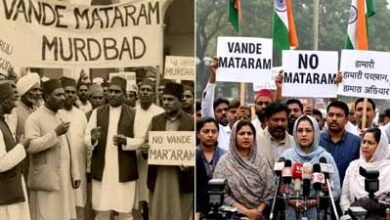
जातीय अंकगणित हुआ फेल: – बिहार चुनाव 2025
बिहार विधानसभा चुनाव 2025 के पहले चरण का मतदान संपन्न हो चुका है, और प्रारंभिक विश्लेषण से यह स्पष्ट संकेत मिल रहा है कि राज्य की राजनीति में केवल जातीय अंकगणित अब एकमात्र निर्णायक शक्ति नहीं रहा है. जिन 121 सीटों पर मतदान हुआ है, वे मिथिलांचल, कोसी, मुंगेर डिवीजन और भोजपुर जैसे क्षेत्रों में फैली हुई हैं, जहां पारंपरिक रूप से जाति और बाहुबल का प्रभाव गहरा रहा है. लेकिन इस बार बिहार की जनता अब जाति से आगे बढ़कर मुद्दों और नेतृत्व की गुणवत्ता को प्राथमिकता देने लगी है.
पहले चरण के मतदान में ‘जातीय अंकगणित हुआ फेल’ की बात इसलिए की जा रही है क्योंकि- केवल जातीय पहचान पर. ये युवा उम्मीदवार की दूरदर्शिता, गैर-आपराधिक पृष्ठभूमि और स्थानीयता को प्राथमिकता दे रहे हैं. वहीँ , महिलाएँ, जो लंबे समय से कल्याणकारी योजनाओं (जैसे शराबबंदी, नकद हस्तांतरण) की लाभार्थी रही हैं, जाति से परे जाकर सुशासन और सुरक्षा के नैरेटिव पर मतदान करती दिख रही हैं. यह एक ऐसा सामाजिक समूह है जो पारंपरिक जातीय समीकरणों को सीधे चुनौती देता है. जातिगत सर्वेक्षण के बाद, अति-पिछड़ा वर्ग (EBC) और दलित समुदायों में उप-जातियों की अपनी राजनीतिक चेतना बढ़ी है. अब प्रमुख जातियों के नेता अपने पूरे समुदाय के वोट को ‘ब्लॉक’ में ट्रांसफर कराने में उतने सफल नहीं दिख रहे हैं, क्योंकि उप-जातियों के अपने स्थानीय समीकरण और आकांक्षाएँ हैं.
पहले चरण के चुनाव प्रचार और मतदान के रुझानों में कुछ प्रमुख गैर-जातीय मुद्दे हावी रहे जैसे – मुंगेर, कोसी और मिथिलांचल जैसे क्षेत्रों में भ्रष्टाचार बनाम विकास और युवाओं के रोजगार का मुद्दा प्रमुखता से उभरा. शहरी मतदाताओं में सुशासन का नैरेटिव हावी रहा, जबकि ग्रामीण क्षेत्रों में भी विकास योजनाओं और स्थानीय उम्मीदवार के महत्व को जाति से अधिक तवज्जो दी गई.
प्रशांत किशोर का ‘जन सुराज’ अभियान, जिसने जाति की राजनीति को चुनौती देते हुए विकास और शिक्षा के आधार पर वोट मांगा, ने उन सीटों पर जातीय वोटों के विभाजन में एक महत्वपूर्ण भूमिका निभाई है, जहाँ मुकाबला कांटे का है. वहीँ , RJD नेता तेजस्वी यादव ने केवल अपने ‘MY’ समीकरण पर निर्भर रहने के बजाय सरकारी नौकरियों को केंद्रीय मुद्दा बनाया. यह रणनीति जातीय सीमाओं को तोड़कर एक व्यापक युवा वर्ग को आकर्षित करने में सफल होती दिख रही है, जिससे पारंपरिक जातीय आधार पर बनी NDA की रणनीति को चुनौती मिली है.
पहले चरण में 60% से अधिक (अंतिम आंकड़ों का इंतजार) मतदान होना यह दर्शाता है कि मतदाताओं में भारी उत्साह था. उच्च मतदान का मतलब हमेशा सत्ता परिवर्तन नहीं होता (जैसा कि पुराने चुनावों में देखा गया है), लेकिन यह मौजूदा सत्ता के खिलाफ या पक्ष में गहन भावना का संकेत अवश्य देता है. शहरी क्षेत्रों (जैसे पटना) की तुलना में ग्रामीण और छोटे जिलों (जैसे गोपालगंज, लखीसराय) में मतदान का प्रतिशत अधिक रहा। यह ग्रामीण मतदाता, खासकर महिलाओं और दलित/EBC समुदायों की बढ़ी हुई भागीदारी को दर्शाता है, जो अपने छोटे-मोटे लाभों के प्रति अधिक संवेदनशील होते हैं और जिनके वोट को ‘ब्लॉक’ करना अब कठिन हो गया है.
बिहार चुनाव 2025 के पहले चरण ने यह स्पष्ट कर दिया कि जातीय अंकगणित अब अचूक नहीं रहा. यह लोकतंत्र की परिपक्वता का संकेत है, जहां मतदाता अपनी पहचान से आगे बढ़कर राज्य और समाज के व्यापक हित में निर्णय ले रहे हैं.
संजय कुमार सिंह
(पोलिटिकल, सहायक एडिटर) ,
ज्ञानसागरटाइम्स.
========== ========= ===========
Caste Arithmetic Fails: – Bihar Elections 2025

The first phase of voting for the Bihar Assembly elections 2025 has concluded, and initial analysis clearly indicates that caste arithmetic is no longer the sole decisive force in the state’s politics. The 121 seats where polling took place are spread across regions like Mithilanchal, Kosi, Munger division, and Bhojpur, where the influence of caste and muscle power has traditionally been strong. However, this time, the people of Bihar seem to be prioritizing issues and the quality of leadership over caste.
The reason for saying ‘caste arithmetic has failed’ in the first phase of voting is because:
- Young people have clearly indicated that their primary focus is on employment, education, and development, not just caste identity. These young voters are prioritizing the candidate’s vision, non-criminal background, and local connect. Similarly, women, who have long been beneficiaries of welfare schemes (such as prohibition and cash transfers), appear to be voting based on a narrative of good governance and security, transcending caste considerations. This is a social group that directly challenges traditional caste equations. Following the caste survey, sub-castes within the Extremely Backward Classes (EBC) and Dalit communities have developed their own political consciousness. Now, leaders of dominant castes are not as successful in transferring the entire community’s vote as a ‘block,’ because sub-castes have their own local equations and aspirations.
Some major non-caste issues dominated the election campaign and voting trends in the first phase, such as corruption versus development and the issue of youth employment in regions like Munger, Kosi, and Mithilanchal. The narrative of good governance prevailed among urban voters, while in rural areas too, development schemes and the importance of the local candidate were given more weight than caste. Prashant Kishor’s ‘Jan Suraj’ campaign, which challenged caste-based politics and sought votes on the basis of development and education, has played a significant role in the division of caste votes in closely contested seats. Meanwhile, RJD leader Tejashwi Yadav, instead of relying solely on his ‘MY’ (Muslim-Yadav) equation, made government jobs a central issue. This strategy appears to be succeeding in attracting a broader section of young voters by transcending caste boundaries, thus challenging the NDA’s strategy based on traditional caste arithmetic.
The voter turnout of over 60% in the first phase (final figures awaited) indicates significant enthusiasm among voters. High voter turnout doesn’t always translate into a change of power (as seen in past elections), but it certainly signals intense sentiment either against or in favor of the incumbent government. The polling percentage was higher in rural and smaller districts (like Gopalganj, Lakhisarai) compared to urban areas (like Patna). This reflects increased participation of rural voters, especially women and Dalit/EBC communities, who are more sensitive to their immediate concerns and whose votes are now harder to ‘block’.
The first phase of the Bihar elections 2025 has made it clear that caste arithmetic is no longer infallible. This is a sign of the maturity of democracy, where voters are looking beyond their identities and making decisions in the broader interest of the state and society.
Sanjay Kumar Singh
(Political, Assistant Editor),
Gyansagartimes.





